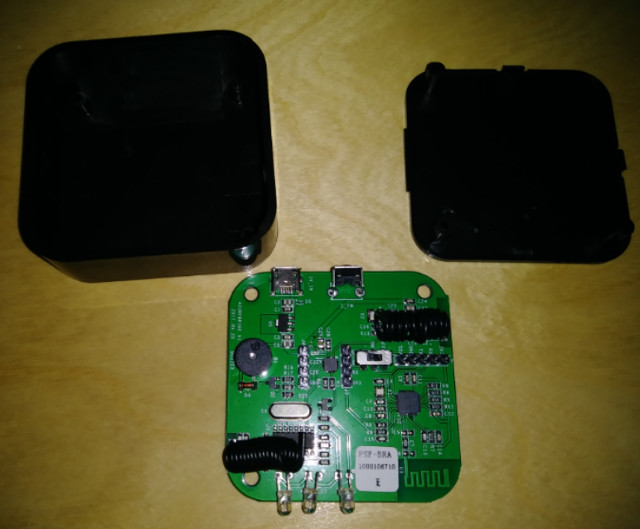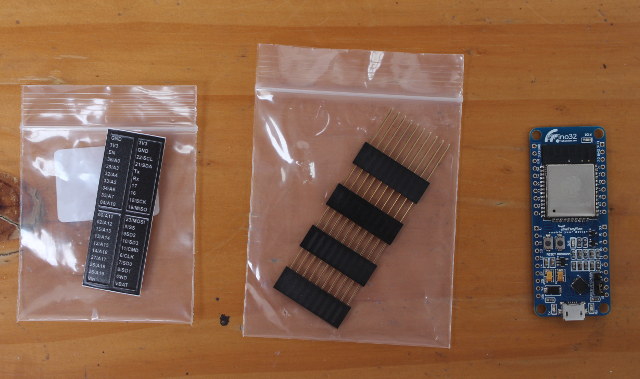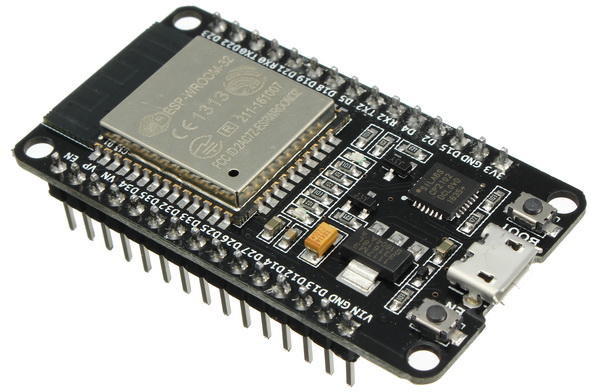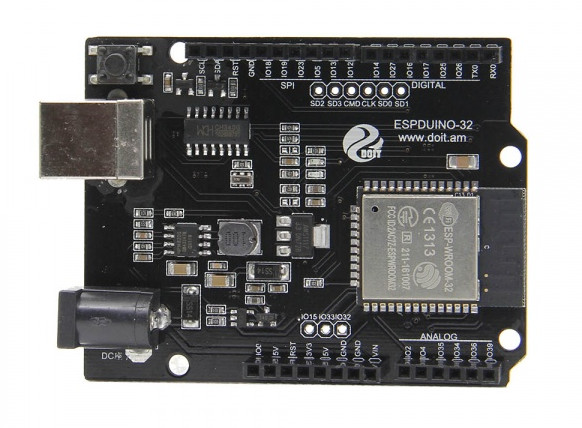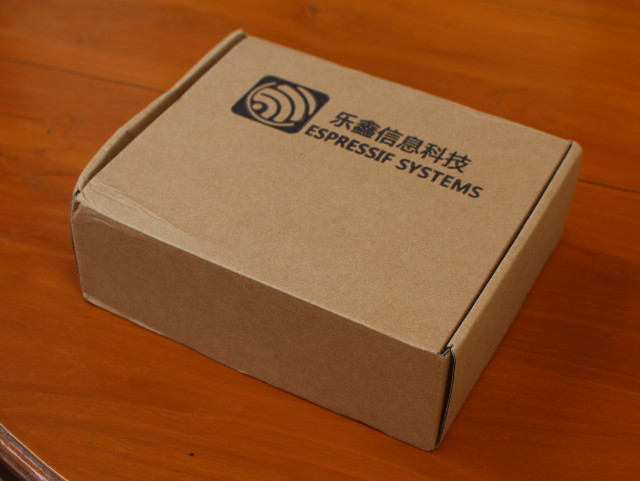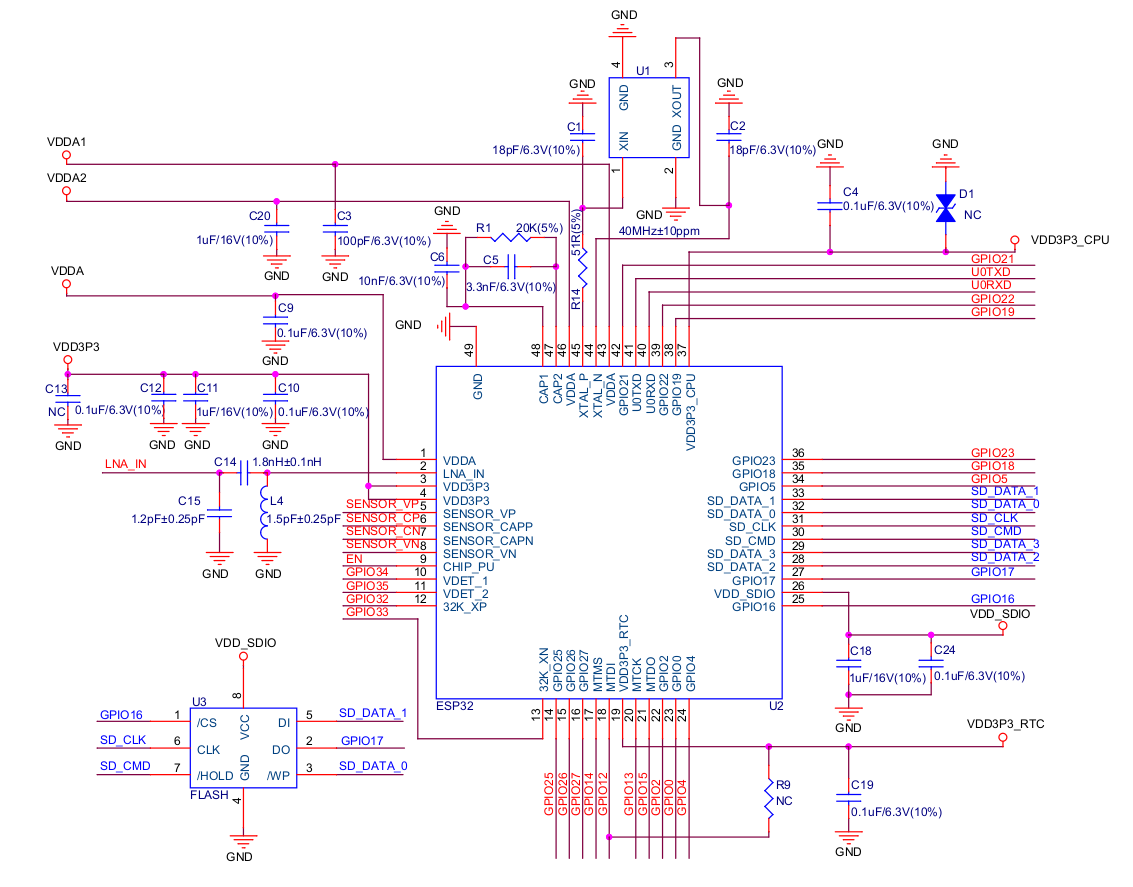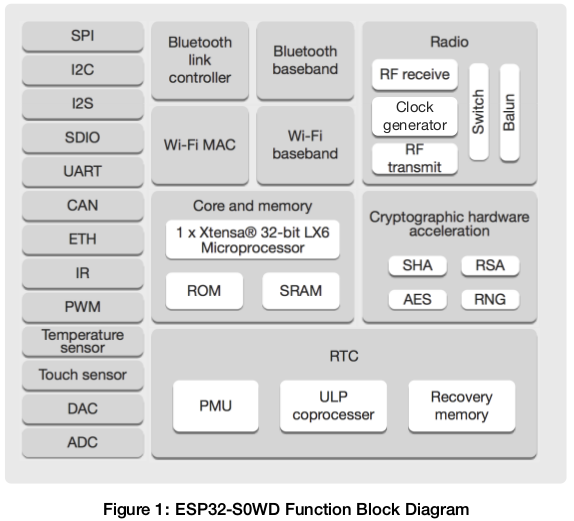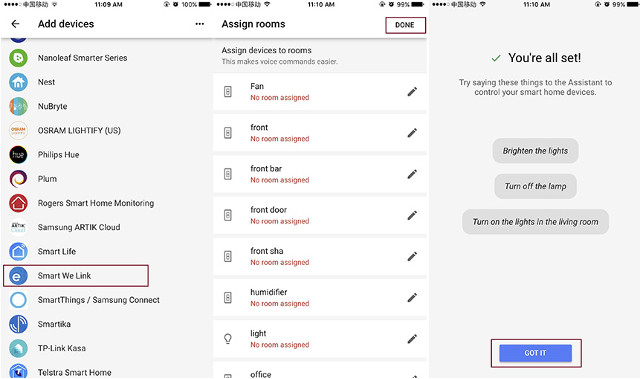Karl here. Today we are going to look at 2 new and one older Sonoff devices. Sonoff RF Bridge – $9.90 433MHz RF to WiFi Bridge Sonoff 4ch Pro – 4 Gang WiFi RF Smart Switch Sonoff POW – Wireless switch with power metering capabilities I spent very little time with the stock firmware on the device. I don’t like the fact that an Internet connection is needed, and I am not in control. As of the time of this writing I found the Ewelink was not configurable enough to meet my needs. There is one feature that is really nice that I could easily see keeping stock firmware. It is the Alexa Skill. It worked. I am also currently reviewing Vobot Smart Alarm Clock with Alexa integration and had no trouble controlling the Sonoff devices with Alexa. But unfortunately I am lazy and want everything automatic so I can’t […]
Getting Started with Espruino & JavaScript on ESP32 with ESPino32 Board
Venus Supply Co., Ltd, better known as ThaiEasyElec, is a company based in Thailand, selling embedded systems and development board, as well as providing development services based in Thailand. The company sent me their latest board called ESPino32 powered by Espressif ESP-WROOM-32 WiFi and Bluetooth module for evaluation. While the board is supported in Arduino-esp32, I’ve already tested Arduino with ESP32-Bit module & ESP32-T board, so after checking out the hardware, I’ll load it with something different: Espruino, a firmware allowing for JavaScript programming over the serial console, or a Web based IDE. ESPino32 Unboxing and Soldering The board shipped with four female headers, and I/O stickers. The board includes ESP-WROOM-32, exposes I/Os through four 10-pin headers, features CP2104 chip for serial to USB debugging via micro USB port, two buttons (reset and program), a user LED connected to IO16, and a jumper to select between regulated power supply (micro […]
Geekcreit ESP32 Development Board Goes for $4 Shipped (Promo)
While you may have thought Wemos Lolin32 board selling for $6.9 plus shipping was already a decent deal, you can now buy a breadboard friendly ESP32 development board for the normal price of ES8266 board thanks to a promotion on Banggood selling 1,000 pieces of “Geekcreit ESP32” board for $4.09 including shipping, and valid until September 10, or while stock lasts. It looks to be roughly the same design as the fake NodeMCU ESP-32s board I once spotted: Wireless Module – ESP-WROOM-32 with Espressif ESP32 dual core processor with 802.11 b/g/n WiFi and Bluetooth 4.0 LE Expansion – 2x 19 pin headers with GPIOs, Analog inputs (ADC), UART, I2C, VP/VN, etc…; breadboard compatible USB – 1x micro USB port for power and programming Misc – BOOT and EN buttons, red (power) and blue (GPIO2) LEDs Power Supply – 5V via USB or Vin pin Dimensions – 51.4 x 28.3 mm […]
ESPDUINO-32 & Wemos D1 R32 ESP32 Boards Support (Most) Arduino UNO Shields
The compact ESP32 NodeMCU like board are great for many project, but in case you plan to leverage your existing Arduino shield, it’s more convenient to have a compatible board. We’ve previously seen Noduino Quantum board sold for 99 RMB on Taobao, and $25.90 on AnalogLamb, but doit.am has designed a cheaper model called ESPDUINO-32 that supports shields compatible with Arduino UNO, and sold for $13.73 on DealExtreme. ESPDUINO-32 board specifications: Wireless Module – ESP-WROOM-32 based on Espressif ESP32 dual core Tensilica LX6 processor with 802.11 b/g/n WiFi and Bluetooth 4.2 LE Expansion – Arduino UNO headers with SPI, I2C, digital I/Os, 1x analog input up to 3.2V, 5V, GND USB – 1x USB device port Misc – Button Power Supply – 5 to 12V input via DC jack or Vin pin Dimensions – 66 x 53.3 x 13.5 mm The board can be programmed with the Arduino IDE selecting […]
A First Look at ESP32 PICO Core Development Board Powered by ESP32-PICO-D4 SiP
Last week, I wrote about ESP32-PICO-D4 system-in-package (SiP) that contains ESP32 WiSoC, 4MP SPI flash, a crystal oscilloscator and some passive components in a single 7×7 mm package in order to allow smaller designs based on ESP32. The company noticed the post, and asked me whether I’d be interested in receiving “some development boards based on ESP32 PICO”, an offer hard to refuse :), and within a couple of days I received the package below. So I ended up with 10 identical development kits, the company probably thought it was no worth paying for DHL to only send one or two development boards… The boards may also be part of some contests… We’ll see 😉 So let’s take two, and have a closer look at “ESP32_PICO_Core_Board_V3″… It comes with two rows of 20 pins with access to all I/Os, and features three main chips: ESP32-PICO-D4 SiP, AMS1117 voltage regulator, and Silabs […]
ESP32-PICO-D4 System-in-Package Combines ESP32, 4MB SPI Flash, a Crystal Oscillator, and Passive Components
Espressif Systems has revealed another ESP32 variant, but this time it’s not an SoC, but a 7x7mm system-in-package (SIP) that comes ESP32 dual core processor, a 4MB SPI flash, a crystal oscillator and various passive components, so that you don’t need to include those in your design, and create an ultra-compact PCB for wearables and other space-constrained applications. ESP32-PICO-D4 SiP specifications: SoC – ESP32 with two Tensilica LX6 cores, 448 KB ROM, 520 KB SRAM (inc. 8KB RTC memory), 1kbit eFuse On-module Flash – 4MB SPI flash Connectivity WiFi – 802.11 b/g/n/e/i (802.11n up to 150 Mbps) Bluetooth – Bluetooth V4.2 BR/EDR and BLE specification; ; class-1, class-2 and class-3 transmitter; Audio: CVSD and SBC SIP Interfaces SD card, UART, SPI, SDIO, LED PWM, Motor PWM, I2S, I2C, IR GPIO, capacitive touch sensor, ADC, DAC, LNA pre-amplifier Sensors – On-chip Hall sensor & temperature sensor Clock – On-module 40 MHz crystal […]
Single Core ESP32-S0WD WiSoC Datasheet and Price
I’m subscribed to Espressif Systems’ notification system so that I received an email each time there’s a documentation update on their website, and this morning they posted ESP32-S0WD Datasheet, the single core version of ESP32 processor, which we reported in our post about ESP32 5×5 packages. Beside the small 5x5mm 48-pin package, and single Xtensa 32-bit LX6 microprocessor, it looks to be the same as the frequently used ESP32-D0WDQ6 with a 6x6mm 48-pin package. The CPU & Memory part of the datasheet reads: ESP32-S0WD: Xtensa single–core 32-bit LX6 microprocessor, up to 200 DMIPS 448 KB ROM 520 KB SRAM 16 KB SRAM in RTC QSPI flash/SRAM, up to 4 x 16 MB Power supply: 2.3V to 3.6V While ESP32 datasheet shows a dual core up to 600 MIPS, so maybe the max frequency is also limited. I could not find any ESP32-S0WD module or board just yet, but GridConnect is […]
Sonoff Wireless Switches & Light Bulbs Now Work With Google Home
ITEAD Studio Sonoff wireless switches can be controlled by voice commands using Amazon Alexa or Google Home, but so far, the latter was only possible by emulating Belkin Wemo switch in alternative open source firmwares such as ESPurna or Sonoff-Tasmota. For people who don’t want to update the firmware themselves, and instead prefer to use the stock firmware with eWelink mobile app, the manufacturer has now announced support for Google Home, on top of the already supported Amazon Alexa service. The instructions are explained in details in ITEAD’s blog post, but basically, you need to start Google Home app in your mobile, select your Google Home device, go to Home Control to add Devices, select Smart We Link, login to eWelink with your username/phone number and password, name the devices you want to control and you’re done. You should now be able to control devices or rooms with voice commands […]


